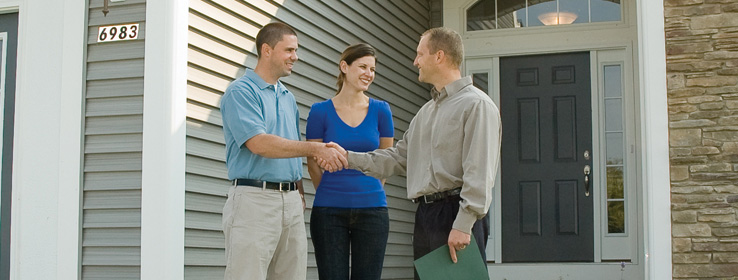Despite its somewhat negative connotation, downsizing can help homeowners save money, reduce maintenance and increase comfort — all with the help of smart, beautiful design.
Homeowners in all stages of life – from first-time buyers to retirees – are seeing the merit of living in less space. Although the average size of new homes continues to climb (it reached more than 2,450 square feet last year), builders and architects say that they and their clients are thoroughly examining whether bigger truly is better.
The downsizing movement reflects a shift in homeowner values over the last decade, according to Susan Davis, design principal for Spectrum Fine Homes. "In the eighties and nineties, we went through the opposite with a lot of our projects and attitudes: build big and put a lot of stuff into these gigantic McMansions," she said. "People thought they needed to have 5,000-square-foot homes, but a lot of things have happened in the last five years to make people think differently."
One such influence has been the current state of the housing market. "We as an industry are needing to create downsizing not just for people who currently own homes, but for people who are in over their heads," said Kerrin West, a partner in charge with BSB Design. "The reality is that the affordability issues have forced our hand to design smaller homes and to create that more frugal side of ourselves, where we can't necessarily have everything we want when we want it. There is an element of downsizing that is going to be necessary just to help the market get back on its feet."
Furthermore, homeowners are fast realizing how much money they save – and how much – less pollution they create – by heating, cooling and maintaining less square footage. "Most of our clients are working people," Davis said. "They don't have time to clean and use a large house, and they understand it's more energy-efficient and green to have a smaller space."
The low-maintenance aspect is particularly appealing to retirees. "For active seniors who are on the go all the time, they just want to have a place to lay their heads while they're in town," West said. "They want to put their money into travel and other things more important to them at this time of their lives."
Though downsizing is increasingly popular with the boomer-and-beyond set, younger homeowners are also jumping on the bandwagon – although their take on the trend is a bit different than their predecessors'. "This generation doesn't want a lot of clutter," Davis said. "They like technology, which has gotten smaller and smaller. Their aesthetic for furnishings and spaces is simple. Plus, most people can't afford to build and furnish a massive house."
Additionally, companies like BSB Design are creating design plans for first-time buyers that incorporate high-quality design and smart use of materials. The firm's proposed Casita Square project in California features high-density, detached homes in the 1,000- to 1,400-square-foot range at a cost of $150,000 to $175,000. "Downsizing is a good idea not just for the current state of affairs, but also to give younger buyers or single parents an alternative to renting, or buying an attached house," West said.
For those who already own a home and want to stay in it, downsizing becomes just as much about reconfiguring space as it is about reducing it. "We're making existing homes more comfortable and accessible," said Chris Donatelli, a partner in Donatelli Castillo Builders, Inc. "People make the most of what they have and add or upgrade amenities."
For example, Donatelli is working on a project for recent empty nesters who are using two existing bedrooms to create a master suite that connects to its own bathroom. For another client in their early sixties, Donatelli's crew removed a deep sunken tub and replaced it with a wide shower. Such changes are made with practicality in mind. "Most of the time they have sufficient income to do the work, but they're not prone to throw their money at frou-frou things," Donatelli said.
The key to any successful downsizing project is incorporating the appropriate amount of storage. "Organization is huge in any room," Davis said. "It's a matter of thinking about what's happening in that room, what needs to be stored, and coming up with creative ways to store what people need and determine what they don't need." For example, replacing a king-sized bed with a queen can free up more space for storage, or even open up opportunities for a sitting area, if that's how the homeowner chooses to use the space.
Color also plays a role when it comes to downsizing. "When you have a small space, color becomes even more critical," Davis said. "The color you paint the walls can increase the psychological volume of space and can also enhance it with a feeling of warmth and serenity."
No matter the type of downsizing project, homeowners should never worry about sacrificing design in the process. "Downsizing doesn't mean a house is less of a wonderful place; it's actually more," Davis noted. "Downsizing is more like simplifying, and that is something all of us can benefit from."
For more information:
- Downsizing Your Living Space Can Have an Upside, if It's Done Properly
Downsizing Your Home with Style: Living Well In a Smaller Space by Lauri Ward. (Harper Collins, 2007)
Living With Less: The Upside of Downsizing Your Life by Mark Tabb. (B&H Publishing Group, 2006)










